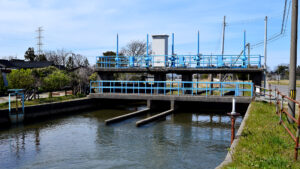Jhamila Perrier, Dongmin Sun, Bailie Frisby
Received 18 December, 2024
Accepted 1 May, 2025
Published online 16 July, 2025
Jhamila Perrier1), Dongmin Sun1), Bailie Frisby1)
1) University of Houston, Clear Lake, USA
This study investigated the spatial and temporal patterns of surface water quality in the Greater Houston Area, Texas. It addressed two key questions: (1) How does population density at the county level influence water quality over time and across space? (2) Have ongoing pollution control efforts effectively maintained water quality over the past 30 years? The Water Quality Index (WQI) method was utilized to transform large quantities of water quality data collected at 20 stations during 1990–2020 into sets of indicative values to investigate spatiotemporal variabilities. Mann-Kendall and Sen’s slope were employed to detect long-term trends. Spatial analysis reveals that water quality is inversely correlated with population density, suggesting areas with higher population density are more prone to water quality degradation. Mann-Kendall trend analysis shows that water quality remained stable for 12 stations, with 6 stations showing an improving trend, possibly reflecting positive effects of ongoing pollution control measures. However, 2 stations in Harris County exhibit a declining trend, highlighting that pollution control has not been equally effective across all areas. These findings highlight the challenges in densely populated counties and underscore the necessity of sustained water pollution control and long-term monitoring efforts.
Copyright (c) 2025 The Author(s) CC-BY 4.0










